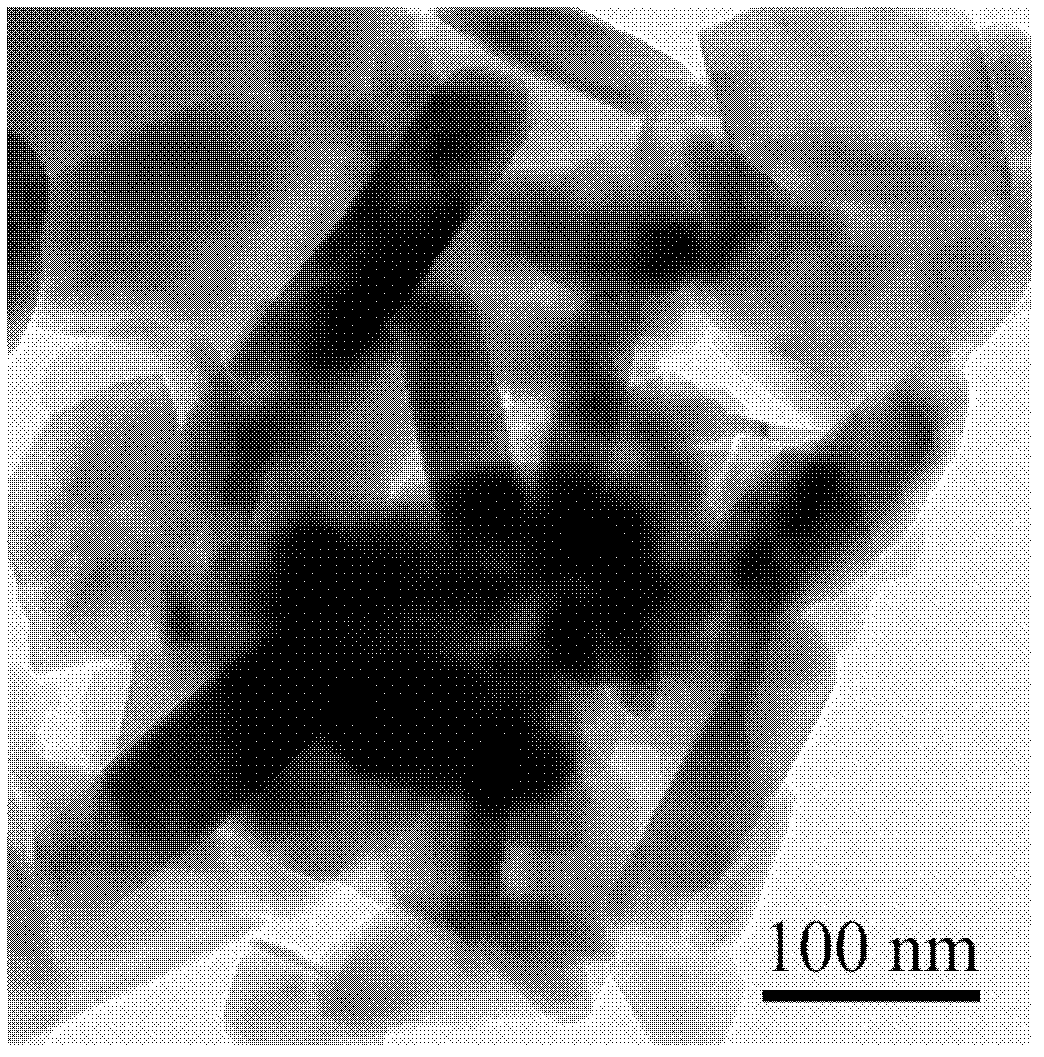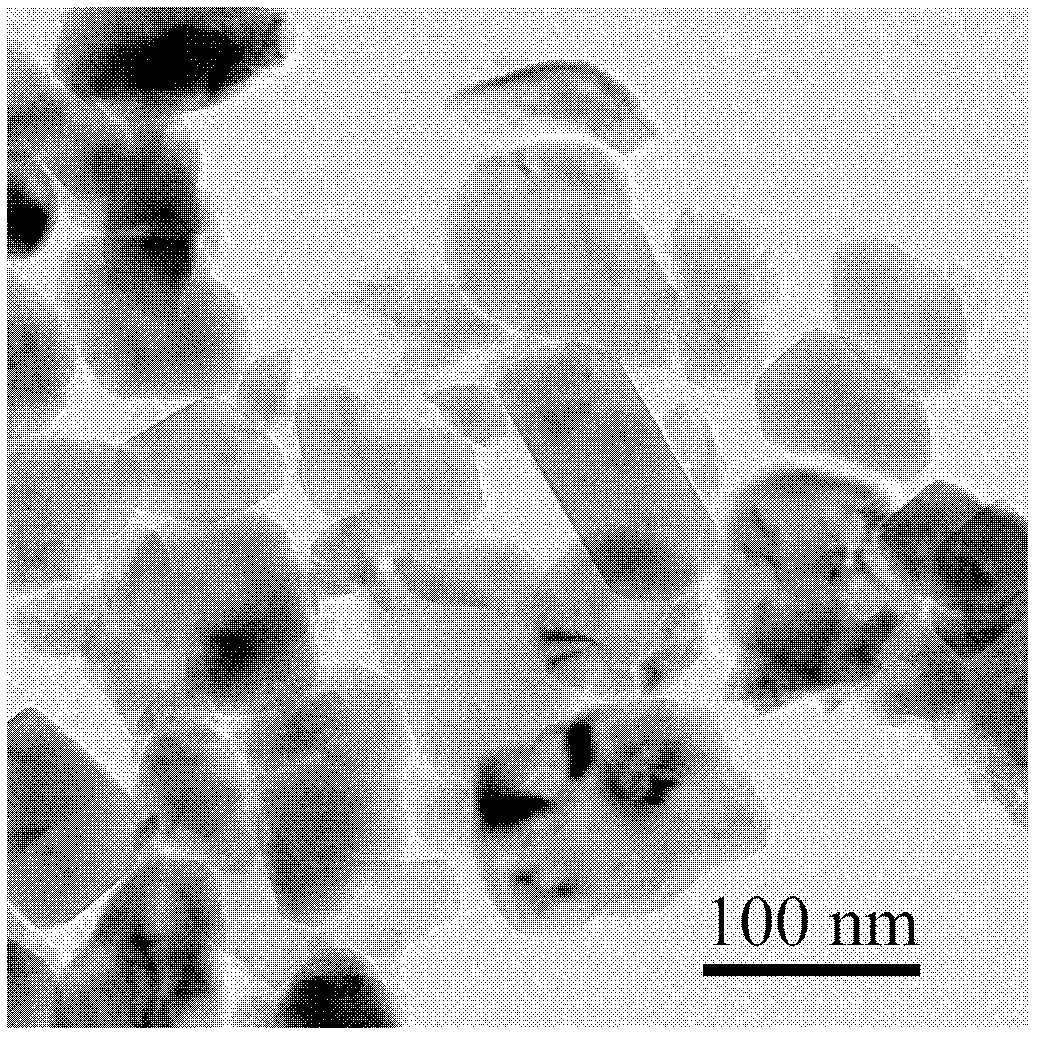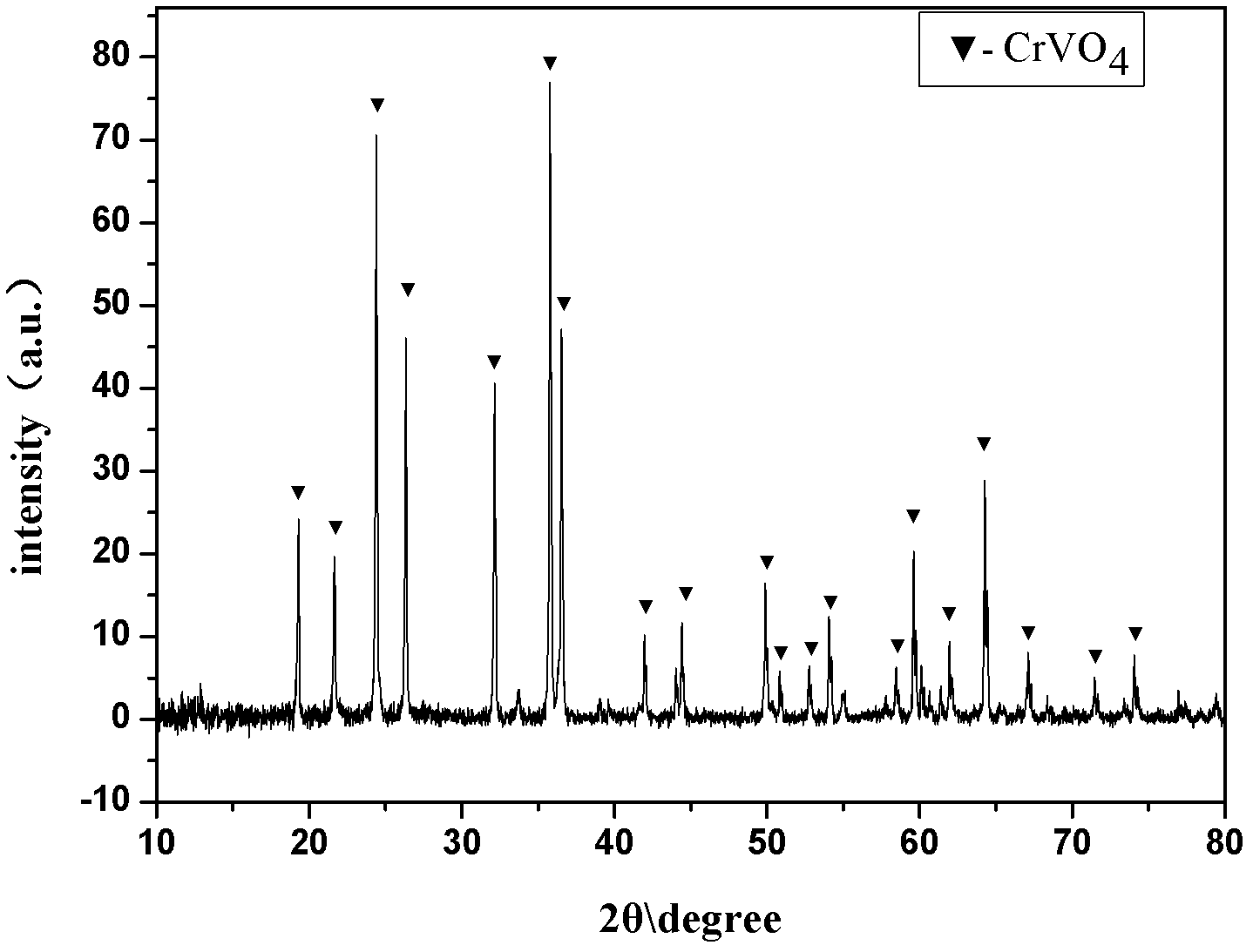Nanometer chromium vanadate as well as preparation method and application thereof
A chromium vanadate and nanotechnology, which is applied in the field of nanomaterials, can solve the problems of carbon on the surface of the catalyst, reduced catalyst activity, excessive oxidation, etc., and achieves the effects of small size, improved reaction activity and low cost
- Summary
- Abstract
- Description
- Claims
- Application Information
AI Technical Summary
Problems solved by technology
Method used
Image
Examples
Embodiment 1
[0023] According to the molar ratio of vanadium to chromium of 1:1, the V 2 o 5 and CrO 3 Put it in a 100ml hydrothermal reaction kettle with polytetrafluoroethylene lining, then add 80ml of methanol and fully stir and mix evenly. After sealing, put the reaction kettle into a resistance furnace and heat it to 180°C. Cool to room temperature. After filtering the product in the reaction kettle and washing it repeatedly with distilled water and ethanol respectively, it was vacuum-dried at 60°C for 5 hours to obtain an amorphous chromium vanadate precursor, which was calcined in a resistance furnace at 600°C for 2 hours to obtain a rod-shaped nano Chromium vanadate.
Embodiment 2
[0025] According to the molar ratio of vanadium to chromium of 1:1, the V 2 o 4 and CrO 3 Put it in a 100ml hydrothermal reaction kettle, add 60ml of methanol and 20ml of distilled water and mix well. After sealing, put the reaction kettle into a resistance furnace and heat it to 160°C. After 48 hours of constant temperature reaction, it is naturally cooled to room temperature. Filter the product in the reaction kettle and wash it repeatedly with distilled water and ethanol respectively, then dry it in vacuum at 60°C for 5 hours to obtain an amorphous chromium vanadate precursor, which is calcined in a resistance furnace at 700°C for 3 hours to obtain granular Nano chromium vanadate.
Embodiment 3
[0027] According to the molar ratio of vanadium to chromium of 1:1, the V 2 o 3 and Cr 2 o 3 Place in a 100ml hydrothermal reaction kettle, then add 50ml of glycerol and 30ml of distilled water and stir well to mix evenly. After sealing, put the reaction kettle into a resistance furnace and heat it to 200°C. After constant temperature reaction for 40h, naturally cool to room temperature. Filter the product in the reaction kettle and wash it repeatedly with distilled water and ethanol respectively, then dry it in vacuum at 60°C for 5 hours to obtain an amorphous chromium vanadate precursor, which is calcined in a resistance furnace at 650°C for 5 hours to obtain granular Nano chromium vanadate.
PUM
| Property | Measurement | Unit |
|---|---|---|
| particle diameter | aaaaa | aaaaa |
Abstract
Description
Claims
Application Information
 Login to View More
Login to View More - R&D Engineer
- R&D Manager
- IP Professional
- Industry Leading Data Capabilities
- Powerful AI technology
- Patent DNA Extraction
Browse by: Latest US Patents, China's latest patents, Technical Efficacy Thesaurus, Application Domain, Technology Topic, Popular Technical Reports.
© 2024 PatSnap. All rights reserved.Legal|Privacy policy|Modern Slavery Act Transparency Statement|Sitemap|About US| Contact US: help@patsnap.com










